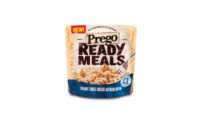Fast, Fresh, Flexible
By Sam Gazdziak, Senior Editor
All three plants in Cargill Regional Beef share the same values, abilities and philosophies.
For more than 50 years, Cargill Regional Beef’s Wyalusing, Pa., plant has been supplying customers across the eastern United States with millions of pounds of beef products on an annual basis. Whether it was operating as Taylor Packing Co. or as part of the Cargill family, the emphasis on serviceability has never changed.
“We like to look at ourselves as the largest custom butcher shop in the United States,” says Andrew Ripic, assistant vice president/general manager. The company’s service model has always centered on being fast, fresh and flexible when working with its customers. That emphasis has made the plant a key part of Cargill’s Regional Beef business unit.
Although the Wyalusing plant has been an important part of Cargill’s portfolio in the past, its role is about to become even greater with the launch of the company’s three national beef brands. In conjunction with facilities in Milwaukee and Fresno, Calif., Wyalusing will be producing beef cuts under the Valley Tradition and Circle T Beef brands, as well as ground beef under the Meadowland Farms label.
The addition of these three brands means some changes for the plant and its existing customers. The product list remains the same, but some brands are being discontinued. The Taylor brand, which has been around since the 1940s, has been replaced by Circle T Beef. Ripic admits it was a sentimental moment for those employees who had been with the company when it was still owned by the Taylor family, but says there is considerable excitement about the new brands.
“Our employees are looking forward to it,” he says. “They know they’ll have a better chance to see [the Meadowland Farms brand] when they go out to supermarkets and look at the meat case.”
The excitement is expected to carry over to Wyalusing’s customers as well. John Zaner, sales team leader for the eastern region, says the relationships between Wyalusing and its customers are stronger than one normally sees in the meat-processing industry.
“As regional beef plants, we view customers and customers view us as part of each other’s family, so there is a tight bond there and a sense of trust on both sides of the equation. We think they’ll look at this [brand launch] with the same exuberance as we are, that this is going to help take us to the next level in helping them increase their market share,” Zaner says.
Mike Coleman, president of Cargill Regional Beef, says that the plant has always encouraged a close relationship with its customers, even inviting them to tour the plant. “I don’t think we’ve ever had a potential customer visit the plant in Wyalusing that we didn’t end up servicing,” he adds. “So when they get Meadowland Farms ground beef in the future, they’re going to know not just where it came from, they’ll probably know the guys who produce the product.”
Since the plant was acquired by Cargill in 2001, Ripic says that both sides have greatly benefited from the association. “We’ve learned a whole bunch on how to produce good ground beef products, and we could have a national sales force sell that product anywhere and get great value out of it. That was something we really hadn’t had before,” he explains.
Cargill, for its part, learned the ins and outs of being a regional company with a strong orientation toward customer service, as well as the extra value that comes from a focus on flexibility and customization.
Staying state-of-the-art
Lean ground beef has long been a specialty of the Wyalusing plant. About 500,000 to 600,000 pounds of case-ready ground beef is produced there on a daily basis, along with 400,000 pounds of red meat.
Tom Potts, plant operations manager, says, “We buy cattle from 28 states every week, and we have the capacity to harvest 1,800 to 2,000 cattle per day, depending on the mix.”
About three-quarters of those cattle are sourced from dairy cows, which is an excellent source of lean beef.
The plant may have been built in the 1940s, but continuous expansion and improvements have made it a state-of-the-art facility, with numerous food-safety interventions, an on-site laboratory and a very modern grinding area. “We have our modified-atmosphere packaging (MAP) or case-ready operation, which consists of five lines. We do everything from a 1-pound patty to 5-pound bulk-pack patties. Then we do a 1-pound [loaf] portion to a 5-pound portion,” Potts says.
The plant can produce to a variety of fat content percentages, and it continually monitors the grind to ensure the ground beef meets the customer’s exact specifications.
The fabrication and grinding area was built in 1996 and includes some of the latest equipment for MAP — either high-oxygen or low-oxygen — and chub packaging. Chubs run to several sizes up to a 14-pound chub. On the case-ready side, three lines produce ground beef “loaves,” while two others make patties of various sizes.
Before any product is ground, it is first tested for E. coli O157:H7. Several samples are taken from each bin of beef trim, and those samples are all tested by an outside laboratory. The bins of trim are moved into a cooler until the test results clear the product.
“Until that release comes back and is released to our cooling department, these bins cannot be ground,” Potts says. Each bin has a unique code, and the bin dumper will not dump any bins that have not been cleared by the testing procedure.
Along with the ground beef, the plant also produces beef cuts for the foodservice and steak-cutting industries. The choice product had traditionally gone into an Excel Genuinely Better box, but it will now also supply cuts for the Circle T Beef and Valley Tradition brands as well.
The new brands will make up the bulk of the plant’s production, but it will continue to produce other products under various Cargill brands, as well as private label and other opportunities.
The facility co-manufactures a line of all-natural products sold by Pineland Farms Natural Meat out of Maine. The co-manufactured products are kept completely segregated from the rest of the product mix, and the all-natural cattle are always harvested on Friday, put on specific rails in the building’s coolers, and processed first thing on Monday morning.
Apart from the beef processing, the plant utilizes as much of the animal as possible. Across the road from the plant is a hide-curing business. It also picks up calf skins from local veal processors, puts them through a wet brining process and sells them to companies around the world for shoes and fine leathers.
“We also have a rendering plant across the road which is probably the most state-of-the-art rendering facility,” Ripic says. “It’s completely computer-controlled, all the way through the process.”
The plant is 15,000 square feet, and the blood meal and other products it produces can be customized to a customer’s specific recipe requirements.
Team effort
The concept of using three regional plants to produce a national product requires all three plants to adhere to exacting specifications. In Wyalusing, the plant is adding new packaging equipment to produce smaller-sized chub packages. Although the launch has required the better part of a year to put together the business strategy and brand development, all three plants are excited about the potential.
“It gives us the ability to take care of our customers who are regional or are in several regions,” says Jimmy Maxey, solutions manager at the Fresno facility. “We’ve always had good-quality products individually, but now we’re putting them together to come up with the branding.”
Jerry Karczewski, general manager at the Milwaukee plant, adds, “It’s been exciting to see something coming together that puts all three plants under one umbrella. It’s always been Cargill and Cargill Regional Beef, but now we have brands associated with that, and that’s going to be huge going forward.”
The two brands for whole-muscle cuts, Valley Tradition and Circle T Beef, harken back to brands that the Fresno and Wyalusing plants had previously used, but the Meadowland Farms brand packages the ground beef in a completely new concept.
“As we brought these three private companies together, there were a lot of questions early on if we were going to use one of the existing brands out of the existing facilities, and how successful it would be with the other two facilities embracing that brand, whichever it [was],” Ripic relates. “I think this is a clean cut. We decided we’re going to come up with new brands that everyone can support and embrace, and we will make a national brand that’s going to be fast and fresh and flexible.”
One advantage was that all three plants have similar layouts. Each harvested a large number of animals, had case-ready and grinding operations and were known for being up-to-date from a technical standpoint. They also processed a similar number of cattle. The Wyalusing plant is 500,000 square feet in size and employs 1,200 people, the Fresno facility is 400,000 square feet with 1,100 employees and the Milwaukee facility employs 950 employees over 250,000 square feet.
Prior to being brought into the Cargill Regional Beef business unit, the three facilities were aware of each other and had done some informal collaboration and sharing of ideas. Karczewski likens the three plants coming together as building a family out of friends, and Maxey calls it assembling a team of allstars.
“It’s creating something that’s fairly unique and allows us to take the regional concept on a national basis,” he adds.
As the concept of the national brands began to take shape, employees from all three plants visited the other facilities. Karczewski has worked at both the Milwaukee and Wyalusing plants and has visited the Fresno facility several times.
“[There’s been] collaboration between the operations people and the tech services people, the sales people and even from the engineering side, getting good interaction,” he says, adding that they have been able to take the best practices from all three locations and use them through the business unit.
“We have a customer in the Milwaukee area, and we draw tenderloins from all three plants to service that customer,” he explains. “The challenge was making sure it was seamless to that customer. It’s [about] having the plants talking to each other, sharing specifications and looking at each others’ products to make sure we have consistency of specifications and performance at the customer level. Three plants really do operate as one unit in that respect, and that’s been neat to watch over the last few years.”
Karczewski says that the fabrication teams are currently working on a yield-reporting project that will enhance consistency, product specifications and yield, and the harvesting teams have had discussions over food safety.
“Those are the things that will help our plants not only be more alike in performance but also will drive plant competition, which will make our business unit better.”
Several advantages work their way down to the customers. Some larger customers are serviced by more than one plant, and there will be great emphasis on consistency between the products from the three facilities. There is also, as Zaner points out, overlapping customer service.
“We have three facilities to back up each other and maintain that level of customer service that our customers are accustomed to,” he says.
The end result of the collaboration, as Ripic says, “allows us to be faster, deliver products fresher, and be more flexible in what we do. That’s the key message we send to our customers in the region.”


Report Abusive Comment